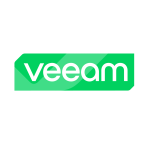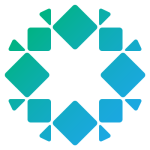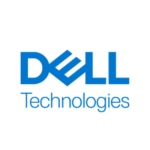What is our primary use case?
We use it for a hot DR site for our primary production environment, allowing us to fail over all of our production servers in case of an emergency.
How has it helped my organization?
We are in a much better position as far as our data protection scheme is concerned, with Zerto. Compared to where we were before, it's a night and day difference, because we didn't have the ability to immediately fail over our production environment. The difference is pretty extreme for our organization. We went from just having SAN snapshots to Veeam backups, and now we have replication.
It massively decreases the time needed for us to fail back because, before, we had no way to do so for our workload. It would have been a manual process to move our workload somewhere else. We would have had to get the VMs off of the existing infrastructure and we would have had to create a whole new infrastructure and get them running somewhere else. That could take two to three weeks, in an emergency situation, with our entire team working on it, versus just pushing a button and moving it right now. We're in a whole different realm now.
There would also be massive savings in manpower to do that. We would have to create a whole new infrastructure, whether in AWS, Azure, or even procuring physical equipment and deploying it. Now that we have Zerto in place, it's there waiting and being replicated too.
What is most valuable?
The fact that it just works is important to us. We don't have to do a whole lot to it. It does its thing in the background and it's ready to go. It enables us to execute our DR plan at any time that is required. It doesn't seem to require a lot of time or management or day-to-day maintenance.
It doesn't "complain" a lot and it's ready to go at any time, so you could call it easy to use. It's just me responsible for maintaining it, and there is a network infrastructure person involved as well. But it mostly maintains itself, once it has been deployed.
It does what it's purported to do, which is to provide continuous data protection. We have a five-second RPO. It's definitely doing its job. It's there in the background, replicating constantly.
What needs improvement?
I would like to see them continuously improve Zerto's automated functions, such as putting hosts in maintenance mode within vSphere and not having to worry as much about how Zerto is going to react. Rather, Zerto should be able to handle putting various hosts, within either the source or destination side, into maintenance mode without having to worry about the vRA appliances. Sometimes, Zerto almost holds the vSphere environment hostage when it comes to taking certain actions. You really need to be cognizant about what you're about to do. They should further automate that and increase Zerto's ability to handle things like that in a very slick, automated way, without intervention.
Zerto could also build more canned automation tools within their product, tools that automatically work with DNS updates to AWS or Azure. Maybe they could provide an area for scripting help or canned scripts, a community or a place where people could grab some scripting. Maybe they could reach into Citrix or F5 load balancer APIs.
Also, if you have a host go wrong or you need to put one in maintenance in an emergency situation, especially on the source side, it can require you to fix Zerto and redeploy vRAs or redeploy the little appliances to the host that they're going to be on.
Also, depending on what resources it has available, storage or vSphere-wise, I'd like to see it able to balance itself out within the virtual environment, with its storage usage on the destination side.
I've only run into these things briefly, so I can't speak about them at the deepest technical level, but I have noticed that they're not as perfect as they could be.
For how long have I used the solution?
I have been using Zerto for three months at my current company, but I have about two years' experience with it in total.
What do I think about the stability of the solution?
For the most part, it has been stable. There have been a few points where I have had to delete the VPG group, re-replicate data, and start over, to get things back to a good spot. But overall it has been pretty stable.
What do I think about the scalability of the solution?
We are only protecting 45 VMs. We're not a large, multinational, so I can't really speak about its scalability.
How are customer service and support?
I haven't used the technical support very much.
Which solution did I use previously and why did I switch?
We didn't have a previous solution, other than SAN snapshots. That's why we looked to put something in place. Previously, we were in a tenuous situation that would make anyone nervous. We went in this direction so that we wouldn't have to be nervous.
How was the initial setup?
It didn't seem that difficult to set up.
It took a couple of days, but that didn't include setting up the SAN and the secondary sites and all of the infrastructure around having it work directly. But just the Zerto solution itself did not take very long at all to set up.
Everything that we needed to do to facilitate the use of the solution was more involved and took a month or so. At the time, we also deployed a Veeam solution to do the long-term storage, and that was wrapped up in the same project, so it's hard to give an exact amount of time for the deployment.
What's my experience with pricing, setup cost, and licensing?
Everyone knows Zerto is a little on the expensive side, but what else is there on the market that does the same thing? It is more expensive per client, for what it does, compared to a backup product like Veeam.
Which other solutions did I evaluate?
We didn't really go into a full evaluation of other solutions. We took the recommendation of our VAR. They're a company that provides us with help in implementing projects. They recommended going to Zerto, and I had already used Zerto before at another company, so I was comfortable with that recommendation.
Zerto serves a very specific purpose in our environment, which is to fail over the entire environment in an emergency, very quickly. Veeam claims to be able to do that, but I don't think it does it as quickly or efficiently as Zerto.
What other advice do I have?
The main thing is to make sure your network infrastructure is designed properly. Zerto is only going to be as successful as the network infrastructure and the automation that is created around it to help with a failover situation.
In our particular situation, we have a stretch network situation, which means we don't really have to do a lot of the automated scripting that most people might have to do, surrounding re-IP-ing the environment and DNS updates. We're in a unique situation. Because we are a telco, we own our entire network and we have the ability to stretch our network to a location that's a state away. That scenario doesn't apply to a lot of other business situations. Other institutions may not have that luxury, in which case their scripted automation, and how well that is set up, would be critical.
Because we weren't doing backup and DR management before, Zerto has probably increased the amount of staff we need. You don't need staff in place for things that you aren't doing.
HPE bought Nimble and made Nimble not as good. Hopefully, the HPE acquisition won't have a negative effect on Zerto. That's a deep concern among all people who have had to deal with things that HPE bought. They need to keep to the original intention and vision without diluting it within some other HPE product or some other HPE offering. I have no interest in seeing Zerto losing its functionality or having it rebranded as some other problematic HPE solution. We bought this as a purpose-built solution to do exactly what we want and that's the way we would like it to stay.
Which deployment model are you using for this solution?
On-premises
Disclosure: PeerSpot contacted the reviewer to collect the review and to validate authenticity. The reviewer was referred by the vendor, but the review is not subject to editing or approval by the vendor.
















